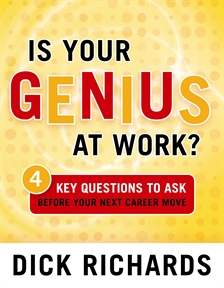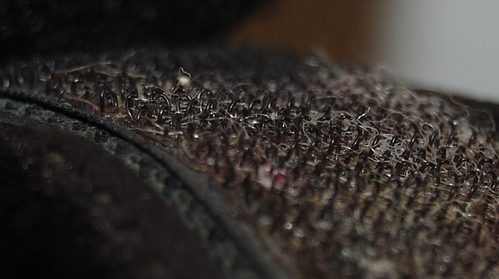
Note: This article appeared on my old website full-time-writer.com. As it most definitely applies to the theme of this blog, I’ve re-published it. Enjoy.
The idea that we should turn our weaknesses into our strengths is a common theme in the self-help community. There are countless books and blogs that tell us to focus on the areas in our life where we could do better and work to systematically improve upon these weaknesses so that they become our strengths.
This is a good idea, but it’s a good idea that has sadly been taken to its logical extreme. Because we have limited our focus to our weaknesses, we forget to recognize our natural abilities and talents. We adopt a kind of tunnel vision, seeing our lives a as checklist of things we need to fix.
If this philosophy could be summed up in one sentence, it would be this:
Determine what you’re bad at, and become less bad at it.
This isn’t the worst philosophy in the world, and it can help you get results to a point. I know that it has certainly worked for me. One of the weaknesses that I had worked to overcome was my shyness and introversion. When I was a kid, I used to be so shy that picking up the phone to call a store about whether they had or didn’t have a particular item in stock made me nervous. Eventually, through some effort, I overcame this weakness. Not only did I not have trouble picking up the phone, but I had grown to love cold-calling. In fact, when I became a corporate recruiter, I was making an average of 80 to 100 calls a day to complete strangers. I wasn’t calling them about store inventories either, but trying to persuade them to meet me at my office to discuss an opportunity in a different company. These calls were often done in Japanese, which is my second language.
Not only did I overcome shyness, but I became a better salesman (recruiting is basically sales). In my first year my ranking out of 100 recruiters in the company was near the bottom. By reading many books on sales and the art of persuasion and applying the techniques from these books in my daily work, I grew from being a terrible recruiter to an above average recruiter. My numbers proved it. I went from near the bottom rung to number 20 or so in the rankings.
As the above two examples show, focusing on overcoming weaknesses does help, but it has its limitations. Nothing made this more clear to me when a 27-year-old rookie, who had joined a year before I did, became the top recruiter in our whole company. He had astounding numbers and less experience than the veterans who had been there for years.
That consultant had a gift. He was a born salesman. He was naturally good at what he did and the more he did it, the better he got. Because I had subscribed to the “weaknesses into strengths” paradigm, I tried to convince myself if I worked hard enough, I would be able to reach his level. Over time, the fact that I had trouble getting even close to his level was a source of real frustration for me.
Because I was hung up on the fact that this rookie had more natural talent than me, I failed to acknowledge my own unique talents, which, although they may not help me become the top recruiter at a headhunting firm, could definitely help me become a leader in other arenas.
It wasn’t until I quit my job to work for myself that my perspective started to change. As I embarked on a new career path and devoted myself to doing what I love, I suddenly realized that, despite my lack of experience, things came much easier to me. My job was no longer a daily struggle with my weaknesses. Rather, I involved myself in work that made the best use of my strengths. Gradually, I moved away from the weaknesses-to-strengths paradigm and began to follow an entirely different philosophy:
Determine what you’re good at, and get better at it.
If you focus on turning your weaknesses into strengths, you’ll achieve a level of competency, maybe even become above average, but odds are you’ll never be the best. Being the best requires both talent and hard work. If you’re missing one of those ingredients, above average is as far as you’re going to get. If you know you don’t have talent in a certain area, stop pushing yourself in the hopes that you can manufacture it through sheer effort. Instead, focus on the areas where you do have talent, and work to develop them. If you develop your strengths first, your weaknesses will have a tendency to take care of themselves.
One book that helped crystallize the idea of “strengths first” for me was StrengthsFinder 2.0, by Tom Rath. The book is essentially an index of the 34 strengths that you can work to develop over the course of your life. Not only are the strengths well-described, but the book also provides action steps that you can take to develop them. In order to determine which of the 34 strengths are your top five strengths, you take an online test that requires a special access code that comes with every book.
Being the personality test addict that I am, I paid my $13.47 plus shipping and handling for the book, tore open the envelope with my super-secret access code and went online to take the test. My top 5 strengths were as follows:
- Intellection – Having a need for mental activity, whether it be solving a problem, developing ideas, or philosophical reflection.
- Ideation – Being fascinated by ideas and new perspectives. Viewing phenomena from new and different angles.
- Futuristic – The ability to have a clear, detailed vision of what the future might hold.
- Connectedness – Understanding that we, all of us, are a part of something bigger. Being aware of the subtle forces and patterns which govern all things.
- Learner – Having a love of learning.
I wasn’t particularly surprised by my results, other very good personality tests I had taken had basically informed me of my strengths (and weaknesses) in a similar way. What was different was how the StrengthsFinder book encouraged me to develop my strengths. The book stressed that although these were my natural talents, I had to work to develop them or they would deteriorate.
Thinking back to my career as a recruiter, I realized how true that was. In the effort to eliminate my weaknesses, I had neglected many of my natural strengths, almost to the point of making them weaknesses. Because I was too busy making calls and answering emails, I gave myself little time to think things through, thus neglecting my abilities of intellection. Because I was so busy gobbling up other people’s ideas about how things should be done, I had spent little time developing my own ideas, thus neglecting my abilities of ideation. Because I didn’t allow myself see past my sales figures for the next fiscal quarter, I failed to think about the future–the long term consequences of my actions and inactions. I was so preoccupied by narrow concerns that I failed to tap into my ability to see the connections between things. Finally, because I let myself work 50 to 60 hour weeks and partied all night on the weekends to blow off steam, I spent very little time learning anything new.
I realize now that I could have worked to develop my strengths even as a recruiter, but because the job was such a mismatch for me, it made me more aware of the weaknesses I had to improve upon than the strengths I could capitalize upon. Now, because I’ve decided to work for myself I find myself gravitating toward business opportunities that take advantage of my strengths rather than making me aware of my weaknesses. It’s amazing what change in perspective can do.




